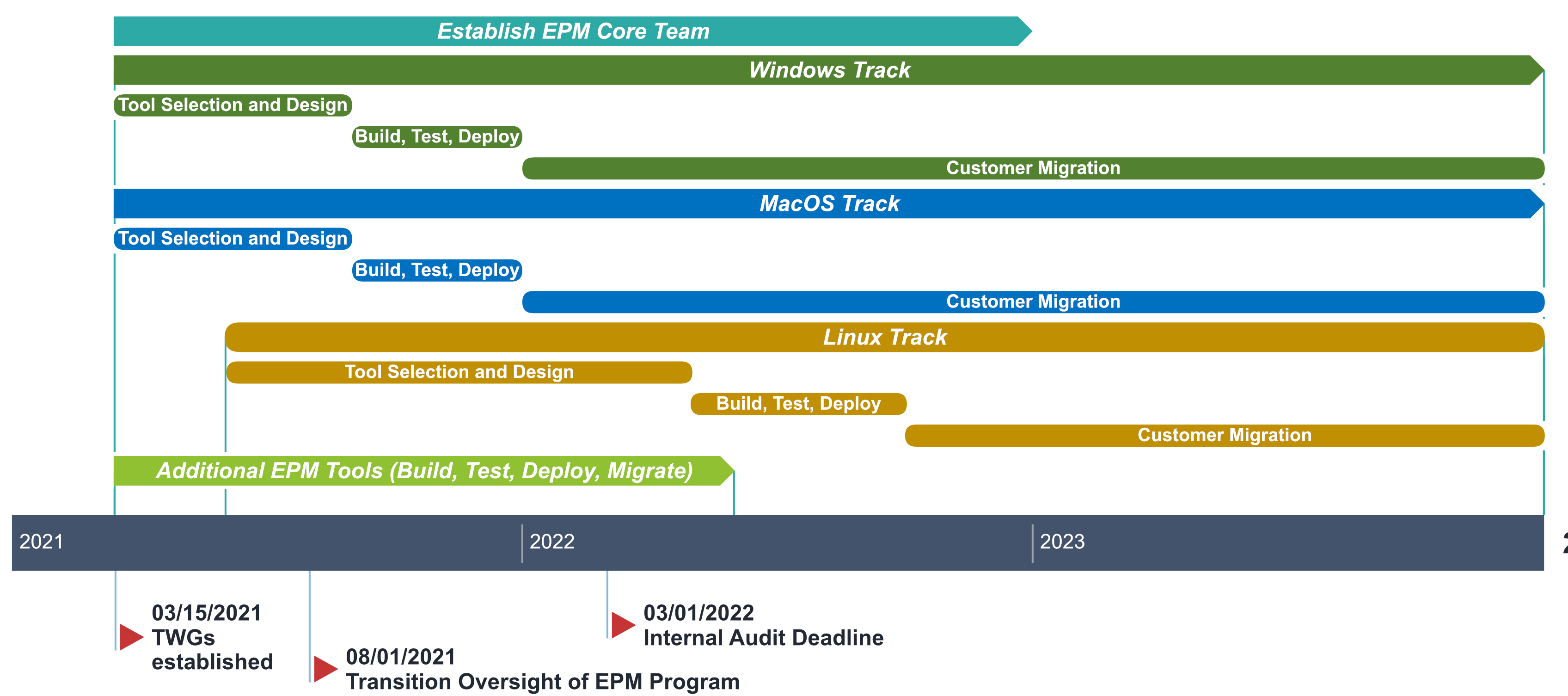EPM Platforms
The following solutions have been selected as part of the EPM platforms:
- Authentication - Azure AD
- Windows Management - Microsoft Endpoint Management - Configuration Manager (MEMCM) (previously SCCM), PatchMyPC
- MacOS Management - Jamf Pro , JamfConnect
- Linux Management - Tool evaluation in progress
- Backup Management - Code42 (previously CrashPlan)
- Malware - Cisco AMP, Windows Defender, or Microsoft Defender for Endpoints
- Remote Management - Beyond Trust (Bomgar)
- Reporting - Isora, Splunk
Timeline
The EPM program timeline includes several tracks for each platform, each with its own distinct phases:
- Tool Selection and Design - tool evaluation, selection, and design of EPM platforms
- Implementation - configure, test, and deploy EPM platforms
- Customer Migration - migrate colleges, schools and units to standard EPM platforms and processes. Customer migration is scheduled to begin March 1, 2022. However, this timeline is partially dependent on funding and staffing: delays may result in an extended timeline.

Phases
Endpoint Management practices vary widely throughout the university and the process of developing standardized EPM processes, deploying central EPM tools, and then migrate all UT-owned end user devices to central EPM tools and processes will take several years to execute.
The program has been divided into the following phases.
Phase 1: Initiation
Assess the current state of endpoint management tools and processes. Identify key stakeholders and technical resources. Partner with the university IT community to formulate requirements and select EPM tools. Develop EPM support model and estimated budget. Implement central Microsoft Endpoint Configuration Manager instance and begin migrating Ivanti Windows customers.
On March 10th, 2021, the ITLC unanimously approved the proposed EPM program plan and associated budget. On April 2nd, 2021, funding for the Endpoint Management (EPM) Centralization and Standardization Project was approved. This funding included centrally-provided funding for the initial program, as well funding for continuing operational costs.
Phase 2: Planning
Identify and acquire products, licenses, and resources needed to deploy campus-scoped instances of EPM tools. Staff EPM core team. Document communication, design, and deployment plans. Develop plan for onboarding CSUs to EPM tools and processes.
Phase 3: Implementation
Implement the plans developed in Phase 2 according to the timelines provided. Expected to take one to two years.
Phase 4: Customer Migration
Migrate CSUs to central EPM toolset in stages. Scheduled to begin in March 2022 and is projected to continue through 2023. Customer migration is our current phase
